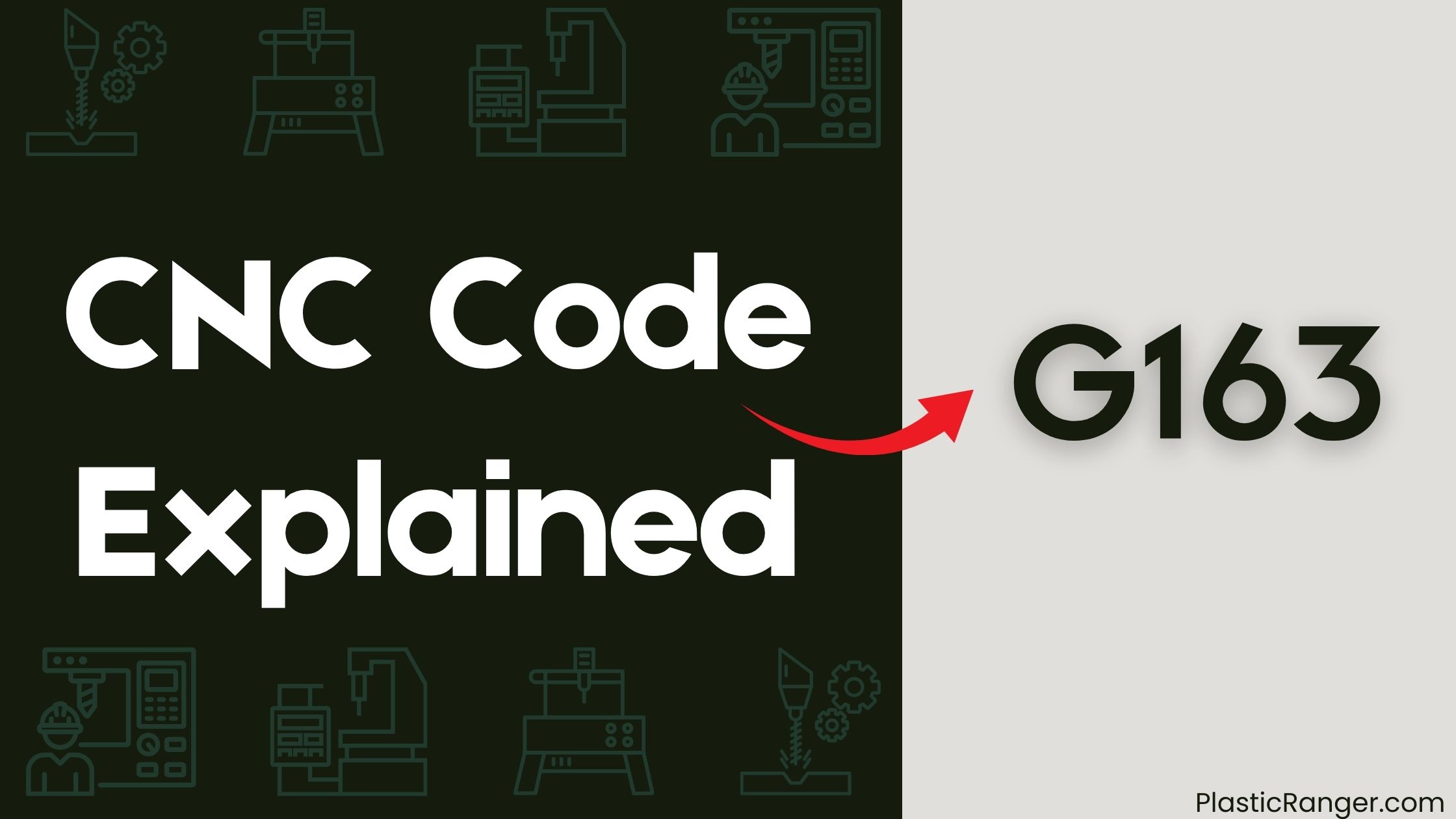Welcome to our simple guide on the G163 CNC code. Whether you are new to CNC programming or an experienced machinist, understanding the G163 code is essential.
This guide will explain everything you need to know about this unit mode command—what it is, when to use it, and why it matters.
(Step-by-step.)

Key Takeaways
- G163 is a modal G-code that allows defining a circle radius that remains in effect until changed or cancelled.
- The circle definition using the radius is valid until changed or cancelled, making it essential for repetitive tasks.
- The axes’ traverse range limits the circle radius that can be defined, up to ±2.14*10 mm.
- A positive radius value yields the shortest possible circle, while a negative value produces the largest possible circle.
- G163 enables circular interpolation and remains in effect until changed or cancelled, allowing for efficient circle definitions.
Understanding Radius Programming
When programming a CNC machine, understanding radius programming is crucial for efficient and accurate circle definitions.
You’ll need to grasp the concept of radius programming to effectively use the G163 code. With G163, you can define a circle using a radius value, which remains in effect until changed or cancelled.
This modal G-code allows you to specify the circle radius, enabling circular interpolation. You’ll need to ponder tool radius compensation and the center point of the circular arc.
A positive radius value yields the shortest possible circle, while a negative value produces the largest possible circle. Keep in mind that the maximum permissible circle radius is limited by the axes’ traverse range, up to 10 mm.
G163 Code Function and Limits
You’re about to plunge into the specifics of the G163 code function and limits, which are essential for effective circle definitions in CNC programming.
As a modal G-code, G163 allows you to define a circle radius that remains in effect until a new definition or deselection through an I-, J-, or K-specification.
This means the circle definition using the radius is valid until you change or cancel it.
However, there’s a limit to the circle radius you can define, and that’s based on the axes’ traverse range, which is ±2.14*10 mm.
This limitation is pivotal to keep in mind when using G163 in your programming.
Programming Examples With G163
Defining circles with precision is crucial in CNC programming, and G163 code offers a convenient way to do so.
As a modal G-code, G163 enables circle radius specification, allowing you to program circular pockets and canned cycles with ease.
- ‘N10 G90 G01 X0 Y0 F1000 N20 G02 G163=50 X100’ demonstrates the use of G163 in circle radius specification.
- ‘%Radiusprogramming_G163 N10 G90 G01 X0 Y0 F1000 N20 G02 G163=50 X100 N30 G03 X200 N40 M30’ showcases G163’s application in programming circular pockets.
- G163 remains in effect until changed or cancelled, making it a essential tool for repetitive tasks.
- By incorporating G163 into your programming, you can streamline your code and improve overall efficiency.
Important Notes and Restrictions
Your CNC program’s success hinges on understanding the nuances of G163 code, particularly its restrictions.
When using G163, you should be aware that it’s a modal G-code, remaining in effect until changed or cancelled.
To avoid errors, bear in mind that radius programming has specific rules and restrictions.
For instance, if the starting and end points of a circle programmed with R, R1, or G163 are identical, an error message is output.
Additionally, to traverse a full circle, you must program it with I/J/K.
Be mindful of the maximum permissible circle radius, which is limited by the axes’ traverse range.
Finally, tool length compensation isn’t applicable when using G163, so plan your program accordingly.
G-Code Fundamentals Review
In the domain of CNC programming, G-codes serve as the fundamental building blocks, and understanding their roles is essential for creating effective programs.
To grasp the concept of G163, it’s essential to review the basics.
G-codes are used to instruct CNC machines, with each code performing a specific function, such as specifying a tool or defining a coordinate system.
Absolute coordinates are used to define a point in space, whereas linear axis movements are used to move the tool along a straight line.
Modal G-codes, like G163, remain in effect until changed or cancelled, allowing for more efficient programming G.
Circle radius specification is critical in CNC programming, and G163 provides an alternative to defining circles using R = radius or R1 = radius.
CNC Codes Similar to G163
| G-Code | Description |
|---|---|
| G153 | 5 Axis High Speed Peck Drilling Canned Cycle |
| G161 | 5 Axis Drill Canned Cycle |
| G162 | 5 Axis Spot Drill/Counterbore Canned Cycle |
| G164 | 5 Axis Tapping Canned Cycle |
| G165 | 5 Axis Bore In, Bore Out Canned Cycle |
| G166 | 5 Axis Bore In, Stop, Rapid Out Canned Cycle |
| G169 | 5 Axis Bore, Dwell, Bore Out Canned Cycle |
| G174 | Special Purpose Non-Vertical Rigid Tapping CCW |
| G184 | Special Purpose Non-Vertical Rigid Tapping CW |
| G194 | Sub Spindle, Tapping Canned Cycle |
| G195 | Live Tooling Radial Tapping |
| G196 | Live Tooling Radial Tapping Reverse |
Quick Navigation
